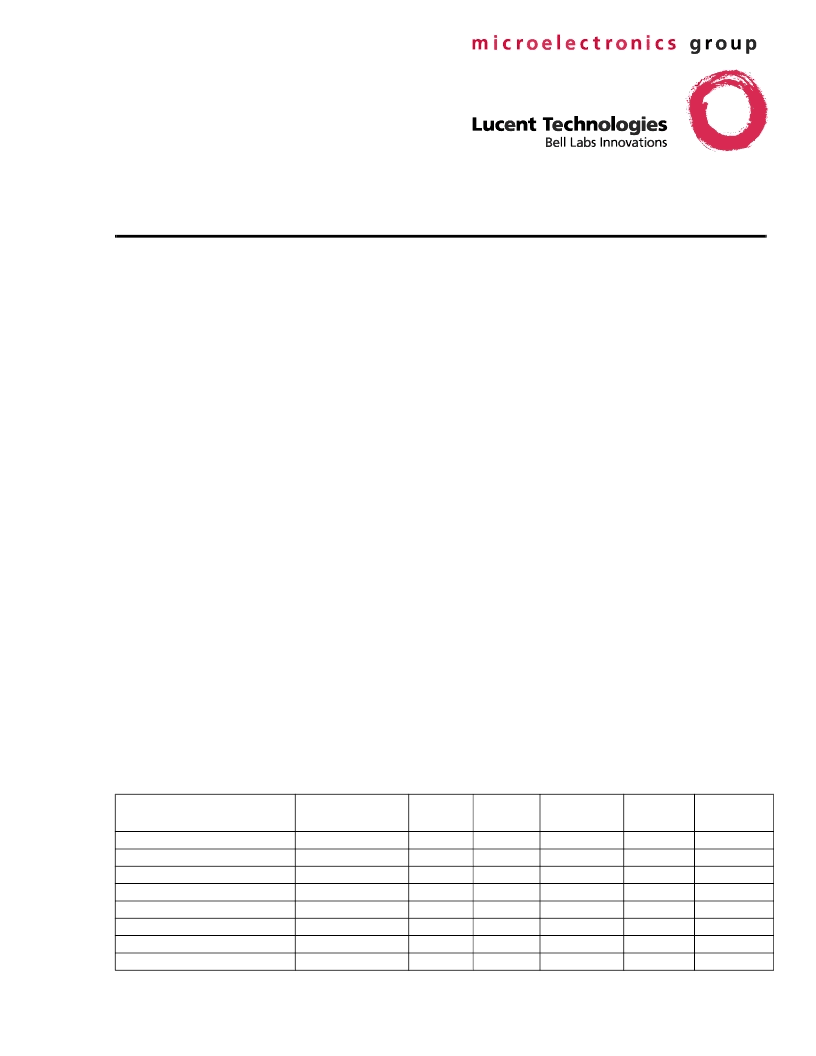- 您現(xiàn)在的位置:買賣IC網(wǎng) > PDF目錄383714 > OR2T04A-4M208 (Electronic Theatre Controls, Inc.) Field-Programmable Gate Arrays PDF資料下載
參數(shù)資料
| 型號: | OR2T04A-4M208 |
| 廠商: | Electronic Theatre Controls, Inc. |
| 元件分類: | FPGA |
| 英文描述: | Field-Programmable Gate Arrays |
| 中文描述: | 現(xiàn)場可編程門陣列 |
| 文件頁數(shù): | 1/192頁 |
| 文件大?。?/td> | 3148K |
| 代理商: | OR2T04A-4M208 |
當(dāng)前第1頁第2頁第3頁第4頁第5頁第6頁第7頁第8頁第9頁第10頁第11頁第12頁第13頁第14頁第15頁第16頁第17頁第18頁第19頁第20頁第21頁第22頁第23頁第24頁第25頁第26頁第27頁第28頁第29頁第30頁第31頁第32頁第33頁第34頁第35頁第36頁第37頁第38頁第39頁第40頁第41頁第42頁第43頁第44頁第45頁第46頁第47頁第48頁第49頁第50頁第51頁第52頁第53頁第54頁第55頁第56頁第57頁第58頁第59頁第60頁第61頁第62頁第63頁第64頁第65頁第66頁第67頁第68頁第69頁第70頁第71頁第72頁第73頁第74頁第75頁第76頁第77頁第78頁第79頁第80頁第81頁第82頁第83頁第84頁第85頁第86頁第87頁第88頁第89頁第90頁第91頁第92頁第93頁第94頁第95頁第96頁第97頁第98頁第99頁第100頁第101頁第102頁第103頁第104頁第105頁第106頁第107頁第108頁第109頁第110頁第111頁第112頁第113頁第114頁第115頁第116頁第117頁第118頁第119頁第120頁第121頁第122頁第123頁第124頁第125頁第126頁第127頁第128頁第129頁第130頁第131頁第132頁第133頁第134頁第135頁第136頁第137頁第138頁第139頁第140頁第141頁第142頁第143頁第144頁第145頁第146頁第147頁第148頁第149頁第150頁第151頁第152頁第153頁第154頁第155頁第156頁第157頁第158頁第159頁第160頁第161頁第162頁第163頁第164頁第165頁第166頁第167頁第168頁第169頁第170頁第171頁第172頁第173頁第174頁第175頁第176頁第177頁第178頁第179頁第180頁第181頁第182頁第183頁第184頁第185頁第186頁第187頁第188頁第189頁第190頁第191頁第192頁

ORCA
Series 2
Field-Programmable Gate Arrays
Data Sheet
June 1999
Features
I
High-performance, cost-effective, low-power
0.35 μm CMOS technology (OR2CxxA), 0.3 μm CMOS
technology (OR2TxxA), and 0.25 μm CMOS technology
(OR2TxxB), (four-input look-up table (LUT) delay less
than 1.0 ns with -8 speed grade)
I
High density (up to 43,200 usable, logic-only gates; or
99,400 gates including RAM)
I
Up to 480 user I/Os (OR2TxxA and OR2TxxB I/Os are
5 V tolerant to allow interconnection to both 3.3 V and
5 V devices, selectable on a per-pin basis)
I
Four 16-bit look-up tables and four latches/flip-flops per
PFU, nibble-oriented for implementing 4-, 8-, 16-, and/or
32-bit (or wider) bus structures
I
Eight 3-state buffers per PFU for on-chip bus structures
I
Fast, on-chip user SRAM has features to simplify RAM
design and increase RAM speed:
— Asynchronous single port: 64 bits/PFU
— Synchronous single port: 64 bits/PFU
— Synchronous dual port: 32 bits/PFU
I
Improved ability to combine PFUs to create larger RAM
structures using write-port enable and 3-state buffers
I
Fast, dense multipliers can be created with the multiplier
mode (4 x 1 multiplier/PFU):
— 8 x 8 multiplier requires only 16 PFUs
— 30% increase in speed
I
Flip-flop/latch options to allow programmable priority of
synchronous set/reset vs. clock enable
I
Enhanced
cascadable
nibble-wide data path
capabilities for adders, subtractors, counters, multipliers,
and comparators including internal fast-carry operation
I
Innovative, abundant, and hierarchical nibble-
oriented routing resources that allow automatic use of
internal gates for all device densities without sacrificing
performance
I
Upward bit stream compatible with the ORCA ATT2Cxx/
ATT2Txx series of devices
I
Pinout-compatible with new ORCASeries 3 FPGAs
I
TTL or CMOS input levels programmable per pin for the
OR2CxxA (5 V) devices
I
Individually programmable drive capability:
12 mA sink/6 mA source or 6 mA sink/3 mA source
I
Built-in boundary scan (IEEE*1149.1 JTAG) and
3-state all I/O pins, (TS_ALL) testability functions
I
Multiple configuration options, including simple, low pin-
count serial ROMs, and peripheral or JTAG modes for in-
system programming (ISP)
I
Full PCI bus compliance for all devices
I
Supported by industry-standard CAE tools for design
entry, synthesis, and simulation with ORCAFoundry
Development System support (for back-end implementa-
tion)
I
New, added features (OR2TxxB) have:
— More I/O per package than the OR2TxxA family
— No dedicated 5 V supply (V
DD
5)
— Faster configuration speed (40 MHz)
— Pin selectable I/O clamping diodes provide 5V or 3.3V
PCI compliance and 5V tolerance
— Full PCI bus compliance in both 5V and 3.3V PCI sys-
tems
* IEEE is a registered trademark of The Institute of Electrical and
Electronics Engineers, Inc.
Table 1. ORCA Series 2 FPGAs
* The first number in the usable gates column assumes 48 gates per PFU (12 gates per four-input LUT/FF pair) for logic-only designs. The
second number assumes 30% of a design is RAM. PFUs used as RAM are counted at four gates per bit, with each PFU capable of
implementing a 16 x 4 RAM (or 256 gates) per PFU.
Device
Usable
Gates*
# LUTs
Registers
Max User
RAM Bits
6,400
9,216
12,544
16,384
20,736
25,600
36,864
57,600
User
I/Os
160
192
224
256
288
320
384
480
Array Size
OR2C04A/OR2T04A
OR2C06A/OR2T06A
OR2C08A/OR2T08A
OR2C10A/OR2T10A
OR2C12A/OR2T12A
OR2C15A/OR2T15A/OR2T15B
OR2C26A/OR2T26A
OR2C40A/OR2T40A/OR2T40B
4,800—11,000
6,900—15,900
9,400—21,600
12,300—28,300
15,600—35,800
19,200—44,200
27,600—63,600
43,200—99,400
400
576
784
1024
1296
1600
2304
3600
400
576
724
1024
1296
1600
2304
3600
10 x 10
12 x 12
14 x 14
16 x 16
18 x 18
20 x 20
24 x 24
30 x 30
相關(guān)PDF資料 |
PDF描述 |
|---|---|
| OR2T04A-4M208I | Field-Programmable Gate Arrays |
| OR2T04A-5J208I | Field-Programmable Gate Arrays |
| OR2T04A-5M208 | Field-Programmable Gate Arrays |
| OR2T04A-5M208I | Field-Programmable Gate Arrays |
| OR2T04A-5M84 | Field-Programmable Gate Arrays |
相關(guān)代理商/技術(shù)參數(shù) |
參數(shù)描述 |
|---|---|
| OR2T04A-4M208I | 制造商:未知廠家 制造商全稱:未知廠家 功能描述:Field-Programmable Gate Arrays |
| OR2T04A-4M84 | 制造商:未知廠家 制造商全稱:未知廠家 功能描述:Field-Programmable Gate Arrays |
| OR2T04A-4M84I | 制造商:未知廠家 制造商全稱:未知廠家 功能描述:Field-Programmable Gate Arrays |
| OR2T04A-4PS100 | 制造商:未知廠家 制造商全稱:未知廠家 功能描述:Field-Programmable Gate Arrays |
| OR2T04A-4PS100I | 制造商:未知廠家 制造商全稱:未知廠家 功能描述:Field-Programmable Gate Arrays |
發(fā)布緊急采購,3分鐘左右您將得到回復(fù)。